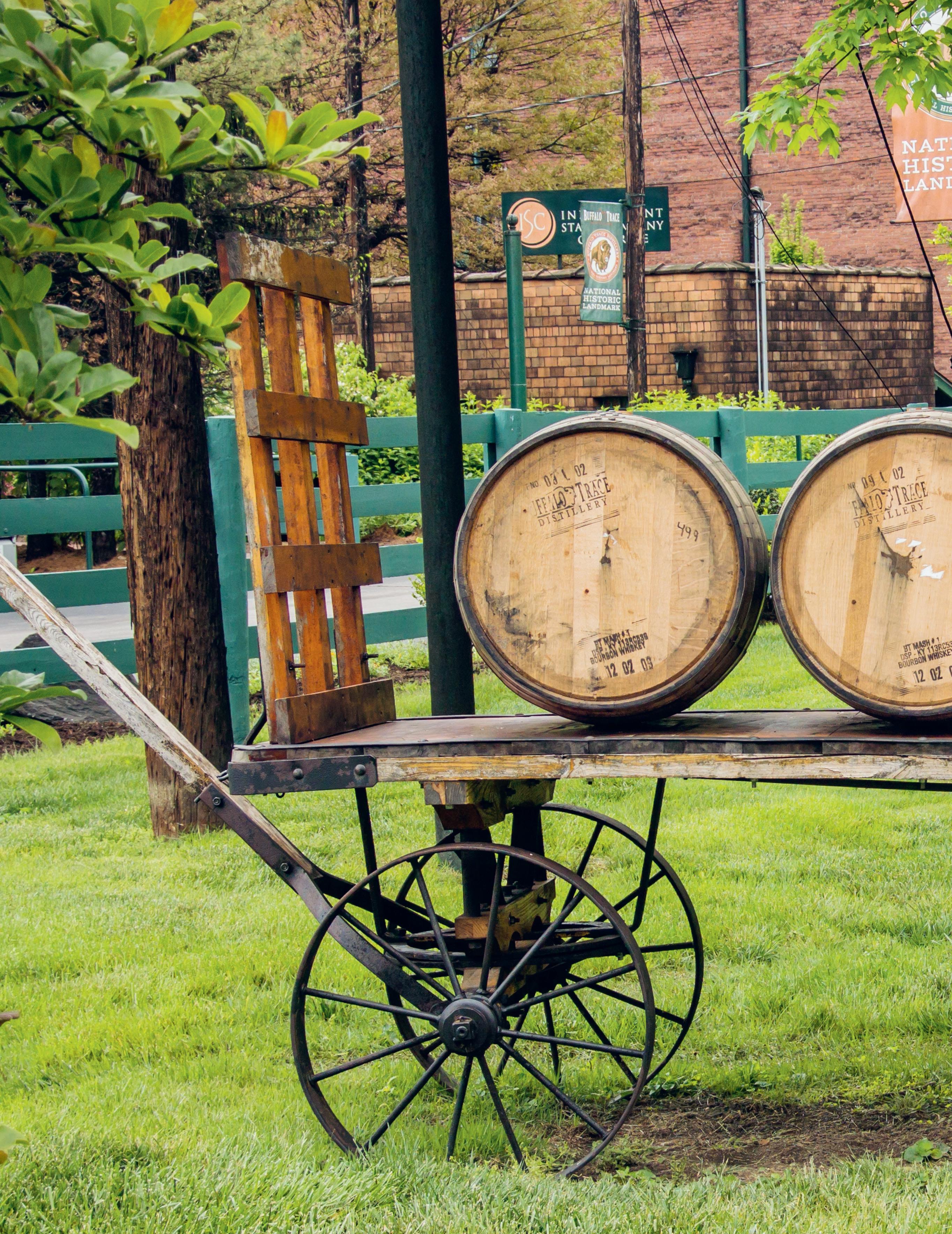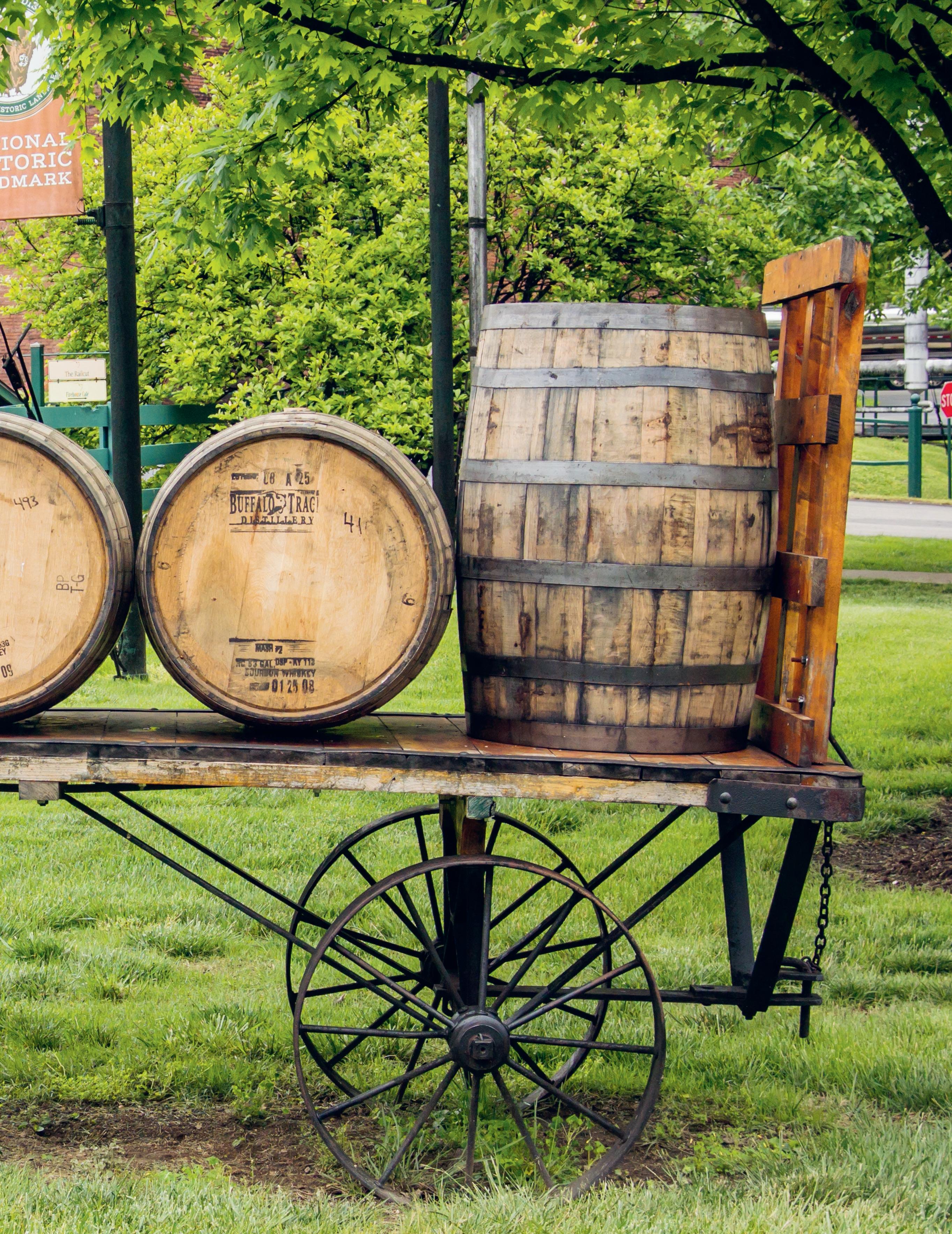






I don’t need to explain what ‘barley’ is to whisky lovers. No barley, no whisky or ‘juice of the barley’, as Robbie Burns passionately called ‘malt whisky’. Romantics, those Scots. But you must be very romantic about using ‘one grain of barley’ as a measure of length.
But believe me, a ‘barleycorn’ is definitely the length of a grain of barley, even by royal decree.
‘One barley corne dry and rounde’ was literally written in the decree issued by King Edward II in 1324, who wanted to establish the standard measures in his kingdom once and for all.
What a concept! The brains behind this stroke of genius had certainly never seen barley before, or they had been drinking too much whisky. Barley grains are like zebras: they all look more or less the same, but it is hard to find two identical ones. There are more than five hundred varieties of barley, and new strains are continuously being added. For instance, there is two-row barley, with fairly regular grains, but also six-row barley, with grains that take on the craziest shapes.
Now it’s up to you: how long do you think a grain of barley is?
Well, it’s easy: the law of 1324 also says that a row of three grains of barley ‘laid lengthwise’ is one inch long. See how easy it is?
But wait: at that time, an ‘inch’ was defined as ‘the width of a thumb measured at the base of the nail’... And thumbs are like zebras... etc.
We haven’t made any progress at all.
Fortunately, the British are much more level-headed today than back in 1324. Since 1 July 1959, only imperial units have been used in the UK (and the USA), and they clearly state that one inch is 25.4 mm.
Voilà: 25.4 mm divided by 3 is 8.47 mm. So, the law states that one barleycorn is exactly 8.47 mm everywhere.
Look, another good thing about reading this: from now on, anyone – wherever you come from – can buy shoes in the UK (where shoe sizes are measured using barleycorn) without a problem.
BARLEYCORN
WHAT
English measure of length
MEANING
The length of one grain of barley
USAGE
It is only used for shoe sizes in the UK and a few other English-speaking countries
This is essential for my non-British and non-American readers: you must remember that a ‘UK size 12 men’s shoe’ is precisely 12 inches. And you know already: 12 inches is 36 barleycorn or 305 mm.
But... this ‘12 inches’ is not the length of the shoe, but the ‘length of the foot’: from the tip of the longest toe to the heel, measured in millimetres. A foot length of 305 millimetres corresponds to a non-UK size of 47 or 47.5. The rest is easy: subtract one barleycorn for each smaller UK size! So, UK size 10 is 305 mm minus 8.47 mm minus 8.47 mm or 288 mm.
Voilà, simple, isn’t it? What could possibly go wrong?
Come on, let’s go shoe shopping in Edinburgh. Don’t panic... I’ll stay with you.


WHAT
The following scene occurred some 15 years ago, a long way from home.
I am chitchatting in the hotel bar with an American expatriate who knows all about the local distilleries. In between, we sip sparingly on a fine whisky. The barman follows our enjoyment with bright eyes.
“Highland Park 18 is good,” he smiles.
Has he tried it himself? “No, sir, but this is a real one!”
He proudly displays a certificate of authenticity around the neck of the bottle.
It is a bottle with the old label design: no silver scrolls, Celtic twists, or Viking horns, just a black surface with gold lettering. Back then, content counted more than appearance. Highland Park 18 from that era was a gem. I don’t think a Highland Park like this has ever been made since, even in Orkney.
What a ‘driving licence’ is for driving a car, a ‘drinking licence’ is for buying alcohol.
MAYBE
An alternative to a new ‘prohibition’
To be clear, I am not somewhere in the Highlands, nor anywhere in America or India, but in Muscat, the capital of Oman, a Muslim country.
Sultan Qaboos bin Said al Said even looked down benignly on my drinking from his ubiquitous photograph.
‘His Majesty’ – the phrase Omanis use to refer to their sultan – had died a few years before, but he would be remembered as the man who made Oman one of the most progressive and tolerant Islamic states. When he dethroned his father and took the throne in 1970, Oman had three primary schools, one six-bed hospital, ten kilometres of paved roads, little electricity, no newspapers... nothing. Wearing jeans was as taboo as drinking alcohol. Now you see women in modern outfits at the wheel of magnificent cars (the car must have been washed, otherwise a juicy fine will follow); Hindu temples, Catholic and Protestant churches, and the bar in your hotel generously stocked.
The Sultan had every reason to bring his country into the 21st century: Oman has a population of about five million, but more than 40 per cent are expatriates from Britain and other English-speaking countries. Mostly young men, leaving a huge shortage of marriageable women, but fortunately not of alcohol.
But Oman is and remains a Muslim country, and Muslims are not allowed to drink alcohol. According to legend, the Prophet introduced this rule after witnessing an argument between his followers. They had had too much to drink at a dinner in Medina, and one of them hit another on the head with a severed bone (the legend does not say what they had eaten, but it could hardly have been a wishbone). Result: no more alcohol.
But what do you do with the non-Muslims in that case?
The Sultan had probably read some history books (something leaders should all do) and knew that banning alcohol in the whole country was a guaranteed
failure. He certainly knew what had happened in America with the ‘noble experiment’ of Prohibition: hundreds of thousands of jobs disappeared, the state lost $11 billion in tax revenue, hundreds of millions of dollars were spent on useless inspections... Crime rose by a quarter in the first year alone, and upstanding citizens became lawbreakers and smugglers. New gangsters got rich, and never before had so many people died from drinking dodgy liquor.
Qaboos introduced the ‘liquor licence’. Expats can simply apply for such a licence. There are a few conditions: you must be non-Muslim, live in Oman, and have a permanent job.You can’t spend more than 10 per cent of your monthly salary on alcohol. If you meet these and all the other conditions, you can have alcohol in your home.
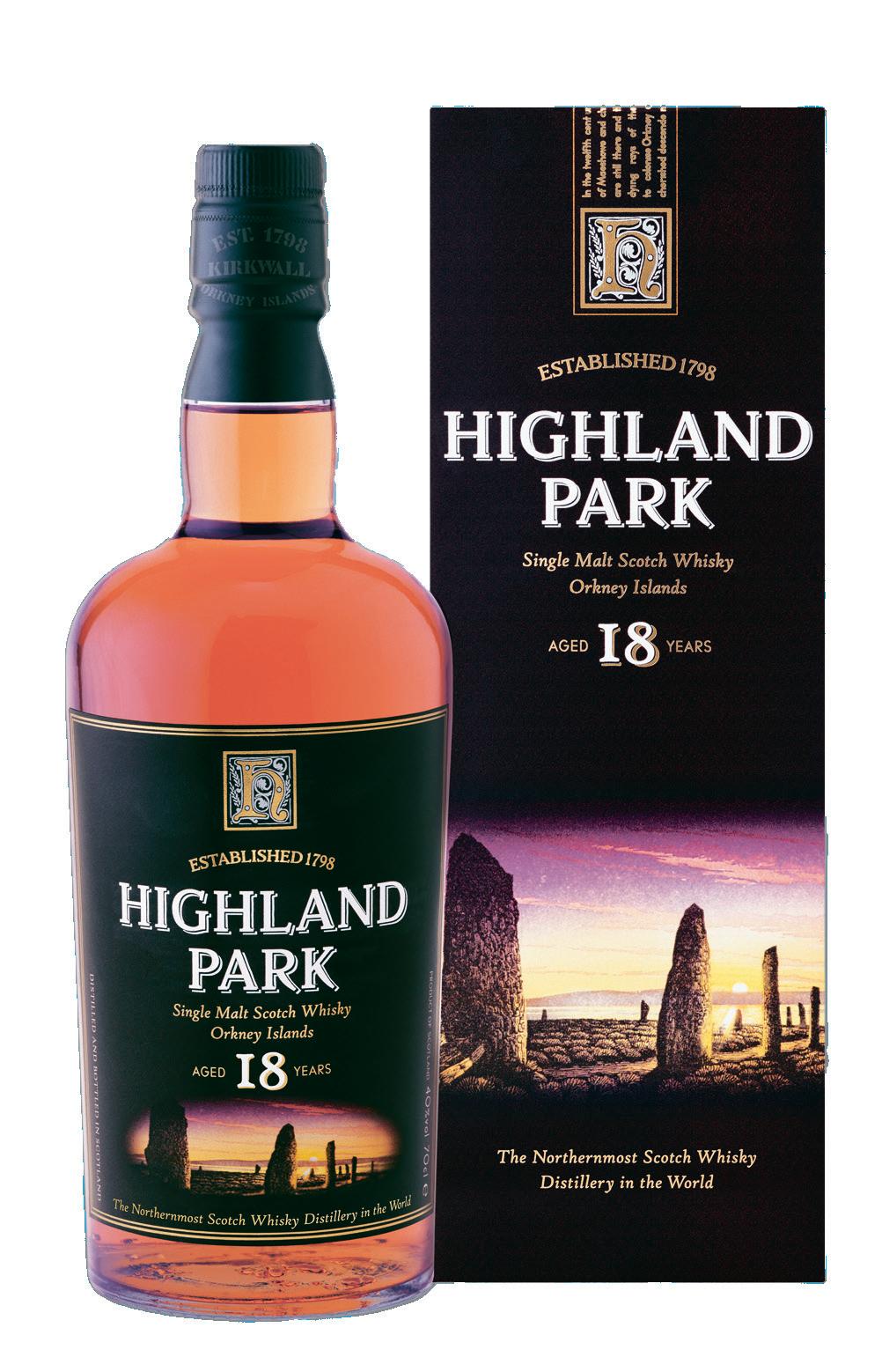
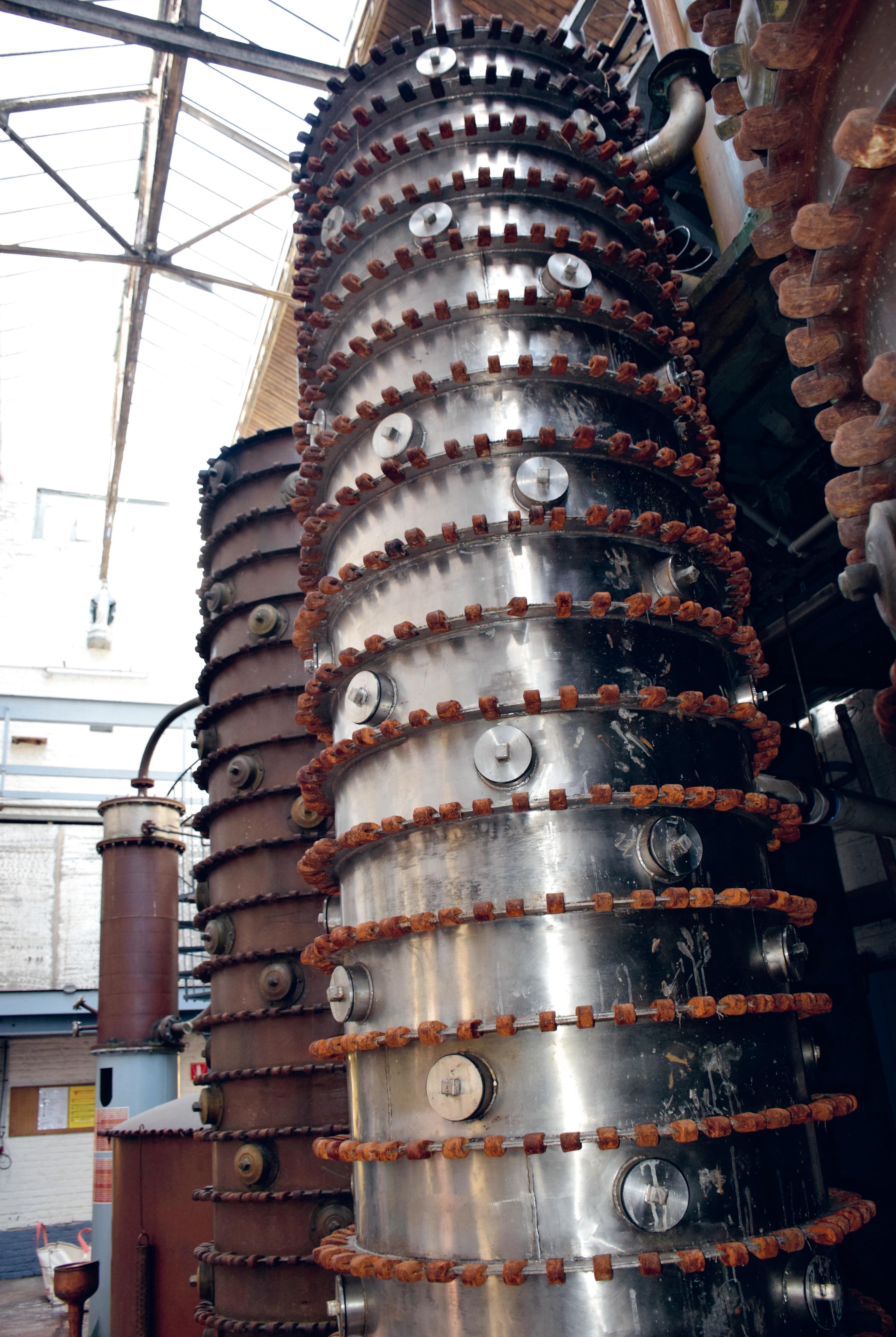
You’ll agree that whisky drinkers are down-to-earth people.
But now and then, after a sip of whisky, they can suddenly start spouting lyrical nonsense, laced with strange terms like ‘oak notes’ and ‘leafy green smell’ and even the occasional alliteration, as in ‘sweet-salty-sea’ flavour. These are tasting notes, and that in itself is harmless. But they become truly euphoric when they see those beautiful copper stills with their bulbous bellies and graceful necks. In these sacred places, the drink of the gods is born. Gorgeous, aren’t they?
LA COLONNE BELGE
WHAT
Device for the continuous distillation of alcohol INVENTOR
Irishman Aeneas Coffey?
OUR HYPOTHESIS
Before Coffey, a similar appliance had already been used in Belgium
But beware, boys and girls, appearances can be deceiving. Let’s take a closer look at the distilling process. You pour a few thousand litres of wash into a still and heat the whole thing. That costs an arm and a leg. What do you get after hours of patiently waiting in that hot room? An alcohol of around 75% ABV, although technically, you can get 96.2% by distillation. True, at 75% your new spirit will also contain congeners, flavours, but at 96.2% it will not!
But two hundred years ago, when the Scots first exported their whisky to England, their southern neighbours didn’t want those congeners. The rough drink was good enough for the rugged throats of those barbarians up there above the Tweed and Clyde.
To make gin, the English redistilled Scotch whisky to extract the alcohol and to remove the congeners.
In the early nineteenth century, inventors in several countries were looking for a device that would allow them to distil much faster, with much more alcohol, and preferably from the cheapest raw materials possible.
Although there were numerous inventors, all working independently, only two names usually appear in whisky books: Robert Stein and Aeneas Coffey. Stein was the first in 1829, but his method wasn’t successful. The Irishman, Aeneas Coffey, did better. He was also in an excellent position to succeed: as Inspector General of the Irish Excise, he had access to many distilleries. He patented his revolution-
You'll agree that whisky drinkers are down-to-earth people.
SHEBEEN WHAT
You may know Wick, the small fishing port in the northeast of the Scottish Highlands. The city has a unique claim to fame: it has the shortest street in the world! Ebenezer Place measures just over two metres and has only one house and one door. Wick is the terminus of the train line that runs north, along the east coast, to Inverness. Heading out of Wick railway station and walking into town, you easily understand why some people call Wick ‘the most desolate town in all the hemispheres’. Indeed, you wouldn’t want to be caught dead there.
I’ve been in Wick several times, always in the rain. In fact, I wonder if the sun ever shines in Wick. But anyway, I love going there – because Wick is where my (Old) Pulteney is! It’s incredible how one of my favourite whiskies was born and boosted up in a town that was dry until 1947.
In 1913, more than 65per cent of the residents voted to make the town alcohol-free. Pubs closed. Liquor shops closed. The Pulteney distillery was sold and resold and eventually closed in 1930. But Prohibition did not have much effect: in 1933, a Scottish newspaper block-lettered that, since Prohibition, more alcohol was being served in Wick than ever before. The editor stated: ‘Wick has become one enormous shebeen.’
A dwelling where alcohol (primarily illegal) is served ORIGIN
Shebeen is Anglo-Irish.
In Irish: síbín APPLICATION
The term was used in the entire (English-speaking) world but lost much of its original, often negative meaning and is now also used for legal drinking establishments
Shebeen?
Irish immigrants brought the concept and word ‘shebeen’ to Scotland.Wherever these Irishmen settled, informal drinking establishments known as shebeens emerged. As early as 1870, the ‘North British Daily Mail’ wrote that Glasgow had over two hundred brothels and more than one hundred and fifty shebeens. That these two institutions were mentioned in one go is not surprising. Shebeens were illegal bars or clubs, usually run by a woman (the Shebeen Queen), where whisky and beer were served (almost exclusively illegally) and where, in many cases, female ‘beauty’ was also present to relieve customers of any other urges.
The history books taught me very little about the actual charms of the ‘beauties’, but the drinks on offer were usually of dreadful quality, seemingly not shy of a dash of methanol.
The ‘North British Daily Mail’ divided the shebeens into two groups: the respectable and the non-respectable. The former merely broke the laws relating to excise, taxes, prostitution, and other purely worldly matters. In contrast, those odious, non-respectable shebeens were places where shady gatherings took place, conspiracies were forged, and gangsters held their meetings.
Understandably, these shebeens were a thorn in the government’s side. Quite a few shebeen ladies and gentlemen (some owners were men) were regularly convicted, but the long arm of the law was no match for the masses. On the contrary, to avoid oppression, the government was cautious in drafting new laws.
In 1910, when the authorities wanted to bring the closing time for pubs back
to 10 p.m., the case was abandoned for fear that even more shebeens would arise.
But it was not to last: by then, many countries had already taken up the fight against alcohol, and Scotland couldn’t lag behind. The Temperance Movement also gained a foothold in Alba, and you can expect the unexpected from Scots.
In 1913, every Scot was allowed to choose whether their town would become alcohol-free. We know the story of Wick. Kilmacolm, located west of Glasgow, followed Wick’s lead but refused to accept that pubs were allowed to reopen in 1947. Kilmacolm remained ‘dry’ until 1976, and it wasn’t until 1998 that a new pub opened: The Pullman, housed in the 120-year-old station building.
But...
In the meantime, the shebeen had spread all over the world. You can find shebeens in the USA, Canada, the Caribbean, and other British crown territories, as well as in parts of the African continent, mainly in South Africa, where they gained a foothold during Apartheid. In the townships, they grew into temples of individuality and militancy.
The shebeens are still there, legally these days, with lots of booze, music and dancing.You can drink there, party with your friends, eat and even stay overnight. And if any other urges bubble up, some establishments offer solutions for that too.
You see, all’s well that ends well.
Shebeen? Irish immigrants brought the concept and word `shebeen' to Scotland.

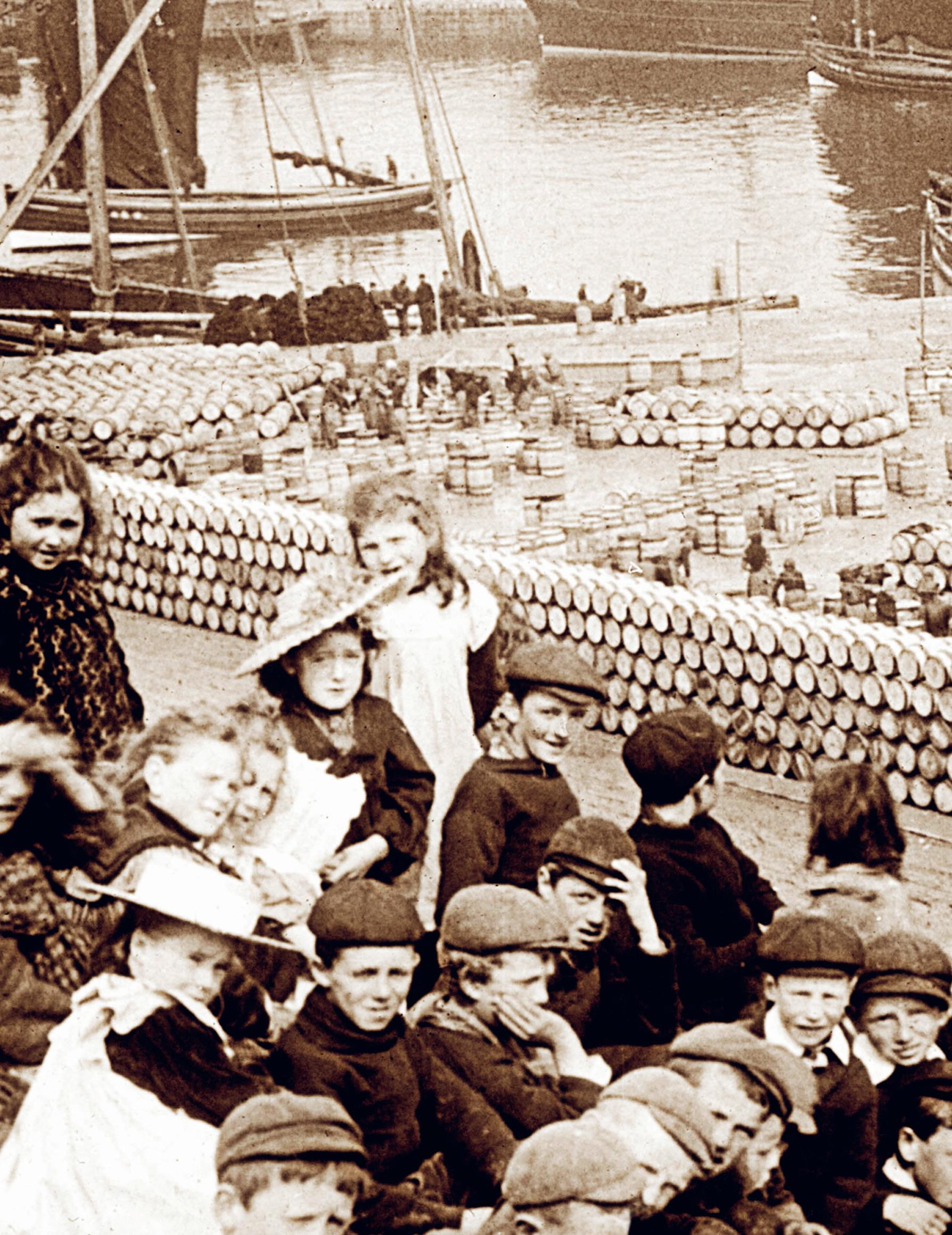

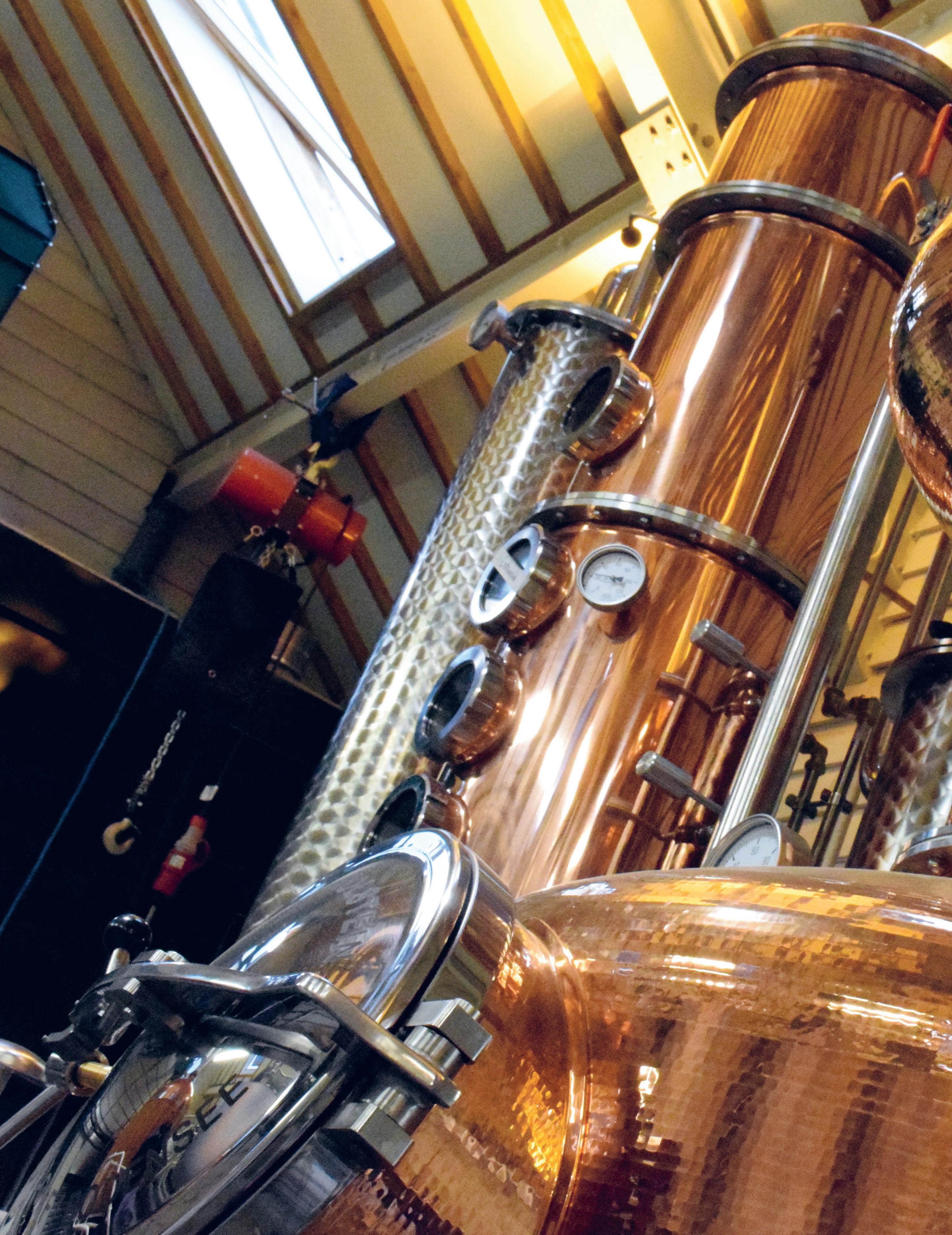
The term ‘distillation’ is not the problem, but ‘triple’ is.
WHAT
Distilling, that’s obvious. We never think about it, but maybe we owe it to a moment of inattention on the part of the Creator when He tinkered together our globe. Or He did it on purpose: ethanol evaporates at a lower temperature than water. Water: 100°C, ethanol: 78.37°. It could also be that the Creator liked to work with a few decimal places. Anyway, our whole distilling process is based on this silly little fact: when you boil beer, the alcohol evaporates first, then the water. That way, you can divide things up neatly.
Obtaining a ‘new spirit’ by three successive distillations instead of the classic two PROBLEM
Sometimes, three equals only two and a half
Unfortunately, other types of alcohol evaporate before water, too. Methanol, for example, evaporates at 64.96°C, and propanol at 82°. Neither is suitable for consumption. Fortunately, the even heavier (and undesirable) alcohols evaporate at over 100°C.
When distilling, you have to fish out the toxic methanol as it evaporates and separate as much ethanol as possible, plus a bit of propanol (because there’s some good stuff in there). This way, after two distillations, we are left with a drinkable ‘new spirit’ of around 72% ABV, a product with flavour of its own and capable of creating even more flavours and aromas.
“So why distil three times?” you rightly ask.
And you are right to add: “It costs money, takes time, and, to make matters worse, the third pass also breaks down some of the flavours.”
“But you get a lighter, easier-to-drink whisky,” I hear someone else exclaim, “and you have more copper contact, so fewer sulphur notes in your whisky.”
Before we can stop you, you shout, “Yes... an easier-to-drink whisky? Isn’t it because you get more than 80 per cent alcohol? Money, money, money!”
Stop it; we’ll never get out of it like that.
However, the solution is simple: while everyone in the whisky world talks about ‘triple distillation,’ only a few actually distil three times. True, in Ireland, it seems like everyone sticks to ‘triple’.
In Scotland, however, Auchentoshan, Springbank, and even the new Rosebank also do triple distillation. Even BenRiach has launched a triple-distilled. Mortlach, too! And while we’re at it, even in Texas and Kentucky, some producers have ventured into triple distilling!
All is well and good, but the problem is that they do it in different ways. It often boils down to the same thing: one part is distilled three times and the rest only twice. It could therefore be said that triple distillation is actually 2.5 times distillation. Someone, apparently with a lot of spare time on his hands, has calculated that Mortlach scores higher. The distillery has six stills, divided into three groups of two. They split the promising liquid in different proportions between the three groups during the production process. This way, the new whisky would be distilled 2.81 times.
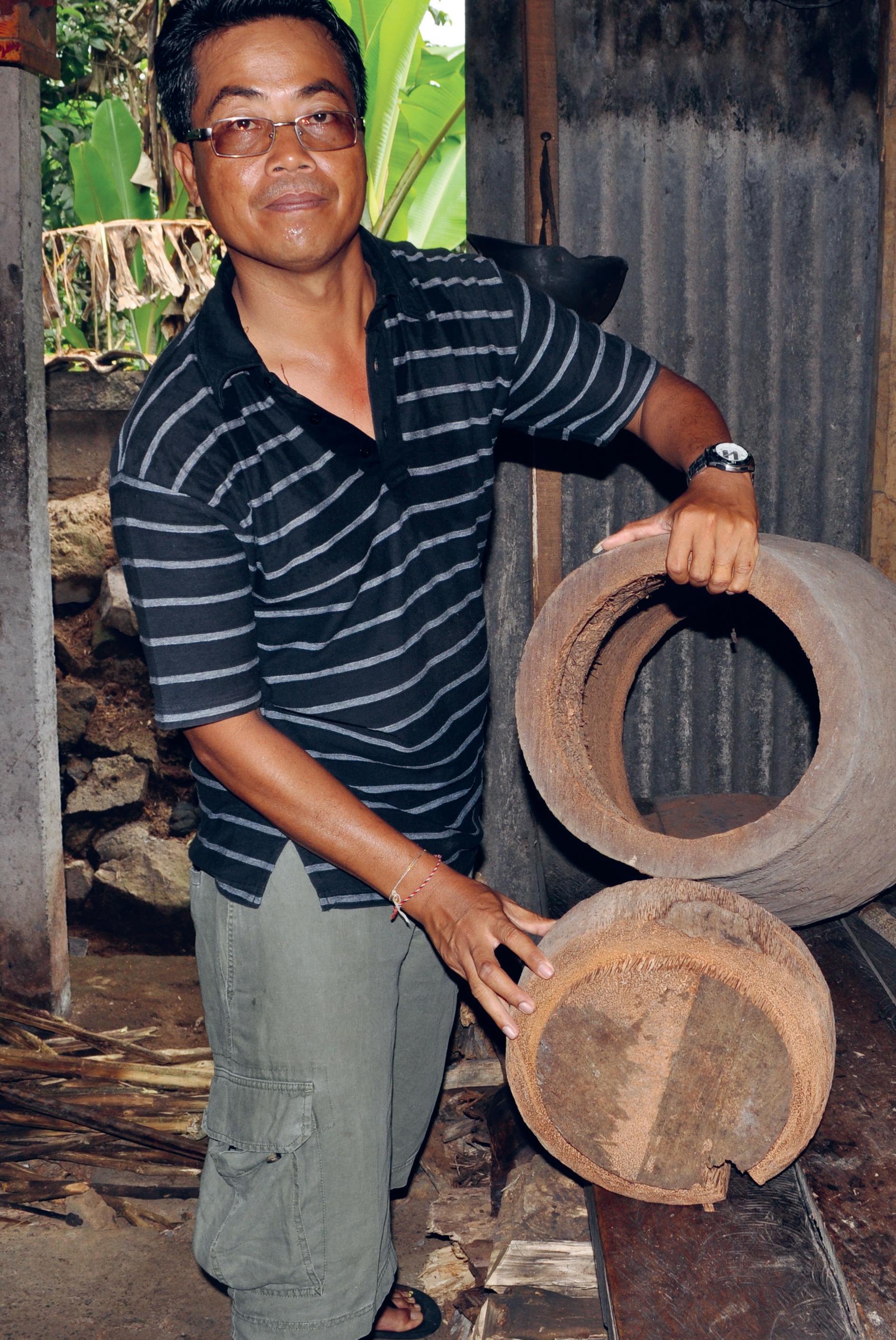
My loyal readers have known it for a long time, and this book has plenty of proof: you will never hear me say a bad word about women. And certainly not about the ladies, young and old, of the whisky industry. I am eternally grateful for what they have done for me, in the distillery and beyond.
I can still see the many dozens of ladies sitting in a huge hall at the Amrut Distillery in Bangalore. All are wearing an identical sari and white gloves. All the newly filled bottles were brought to them and passed from hand to hand around the hall. The first lady would stick a label on it; the next would take the bottle, polish it again and pass it on to a colleague for the next label. And so on, until the bottle ended up in a tube, to be put in a box after another thorough check and more polishing by a few more ladies. Since that day, I have treated every bottle of whisky with awe and gratitude.
FLEE FROM RANGHA WHO Rangha leads an army of witches WHERE On Bali AND She hates alcohol drinkers
But there is one woman I must warn you about. Worse, I would urge you to avoid this woman like the plague. And yes, she does have something to do with alcohol. And no, I swear, I’ve never met her. All I know is that her name is Rangha.
Because Ketut told me all he knew about Rangha. I met Ketut a few years ago by chance in Sedimen, a picturesque village in the southeast of Bali. Ketut was a distiller and invited me to his home.
It took a while to find Ketut in Sedimen. There was no need to knock on the door because, like everywhere else on the island, the gate in the fence was wide open. We had to climb a few steps, only to almost run into a metre-high wall. Ketut had built it, and for a good reason: demons and monsters (you can meet them everywhere in Bali) always walk in a straight line. The steps in front of the entrance were the first obstacles for these evil spirits. And if any of them is smart, after dodging the steps, they will definitely run into this wall. Only good ghosts can easily avoid heavy obstacles.
Inside the fence, under the coconut trees, we see three small dwellings and an open space occupied by artfully gilded family temples laden with offerings. The gods are everywhere.
The ‘distillery’ is beside the temples, under a rusty canopy on four poles. This is where Ketut distils his arrack for the whole family and the many customers in the village.
WHAT
US and Europe bickering over economic problems
SOLUTION
Threatening to wield a powerful weapon
WEAPON
Whisky
Imagine it is mid-November 2023, and you are sitting by the window. It’s raining cats and dogs. The wind is blowing like crazy. The sky is dark; the streets are grey and empty. Even your dog refuses to go out for his necessary walk in this awful weather. And you sit staring into the distance. The best thing you can do is pour yourself a wee dram. In your yearlong quest for the best whisky, you’ve also discovered several tasty bourbons that have earned a place in the queue of your favourite bottles.
You pour yourself a ‘wee’ Maker’s Mark, let it waltz in your mouth for a while and swallow. Ahhhh... nice. A little colour appears in your day... but then you open the newspaper, and your eye accidentally catches a small article with the ominous title: ‘From 1 January 2024: prices of all US whiskies will increase by half, due to a new 50 per cent tax’.
And you thought the day couldn’t get any worse!
No, this is not a dark dream, but a harsh reality. It has been in the air for a while, but Ursula von der Leyen, President of the European Commission, has confirmed it.
What have we done wrong?
Nothing; in fact, it is not the first time that whisky has been used to overturn decisions made by other countries. It’s all the fault of ‘steel and aluminium’. And Donald Trump.
In 2018, things did not go well between the then-president and the EU (and the whole world) on several trade issues. The hottest issue was steel and aluminium. That year, Trump imposed strict rules that were unacceptable to the EU. In response, Europe immediately slapped a 25% tax on all imported US whiskey.
That set the ball rolling.
The following year, the US also imposed a 25% tax on all Scotch and Irish whiskey, leading to Europe imposing 25% on all US rum, vodka, and brandy by 2020. Then, you guessed it, the US introduced a 25% tax on, among other things, all cognac from Europe.
The results were clear! Between 2018 and 2020, US whisky exports to Europe fell by almost 30 per cent, a turnover loss of more than a billion dollars. Whisky imports from the UK to America fell by 49 per cent, whereas they had increased by 94 per cent in the ten years before.
And then, in 2022, they agreed to meet. They decided that by the end of 2023, the steel and aluminium issues would be off the table. The tariff game was stopped overnight.
Good news followed soon after: US whisky exports to the EU were up 118 per cent in the first half of 2023, compared with the same period in 2022.
But the US whisky world is not yet at ease. The pressing question is: will everything be OK after 1 January? Are we rid of the steel-aluminium problem? Will we still hear Ursula von der Leyen? Will these Europeans put our whisky out of business?
These questions are not only being asked in Kentucky. Whiskey is produced in and exported from thirty-six states in the US. There are already over 2,600 distilleries in Uncle Sam’s country! That’s eighty times more than in 2000. Together, they account for a product value of more than five billion dollars, and one-quarter of this is exported. Whisky alone accounts for 62 per cent of all drinks exports.
And what about British whisky? Are they also under fire?
On 31 January 2020, Britain’s marriage to Europe ended: Brexit was a fact. Whisky producers watched the ever-declining export figures (and all the other problems) with suspicion. In 2023, exports to the United States were still down 7 per cent, or around £100 million.
But the Scots are hopeful as they look forward to the end of 2024, when the taxes imposed on single malt Scotch whisky in 2019 should be off the table. At the end of the tunnel, a tariff-free trade for Scotch whisky in the US should be waiting for them.
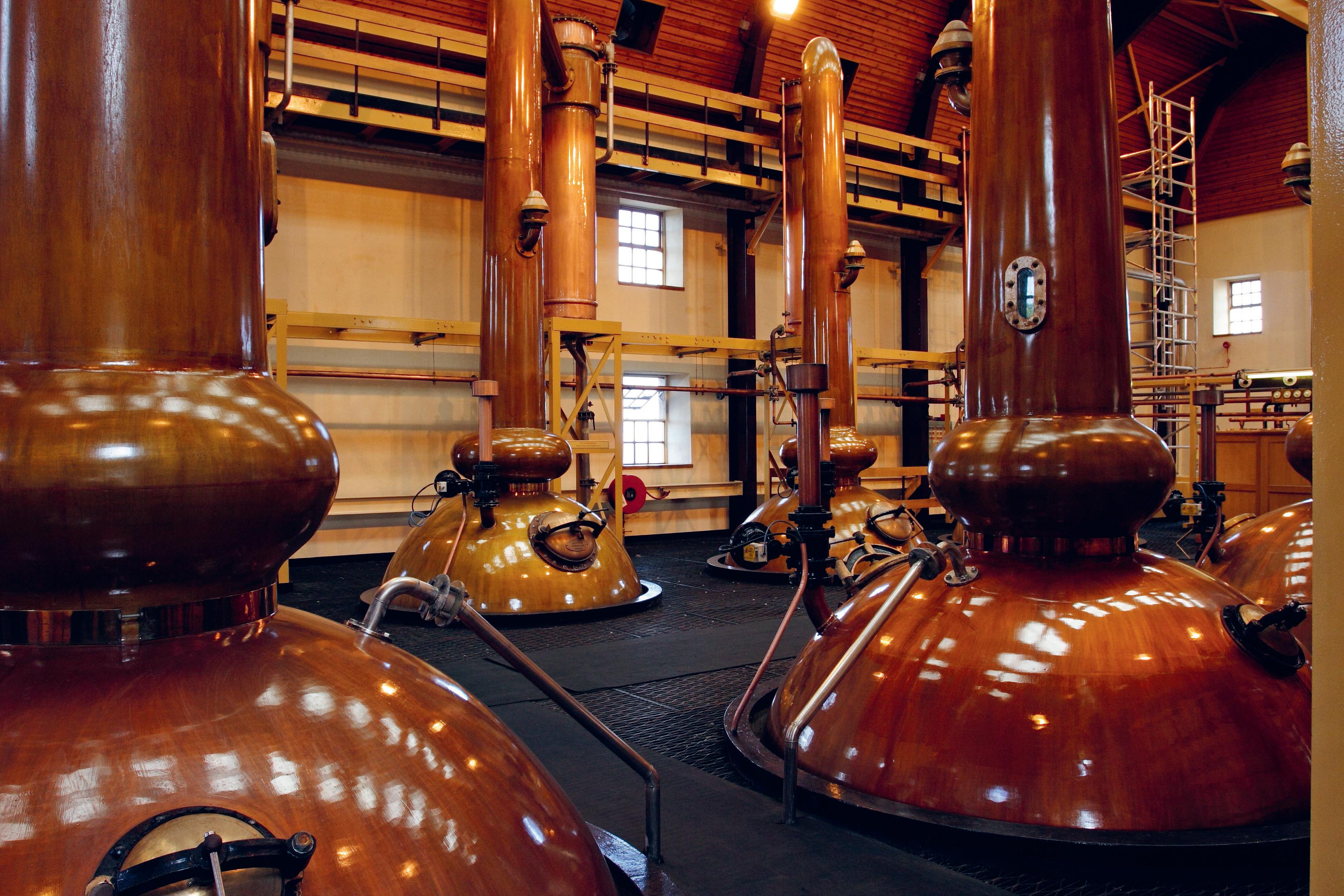
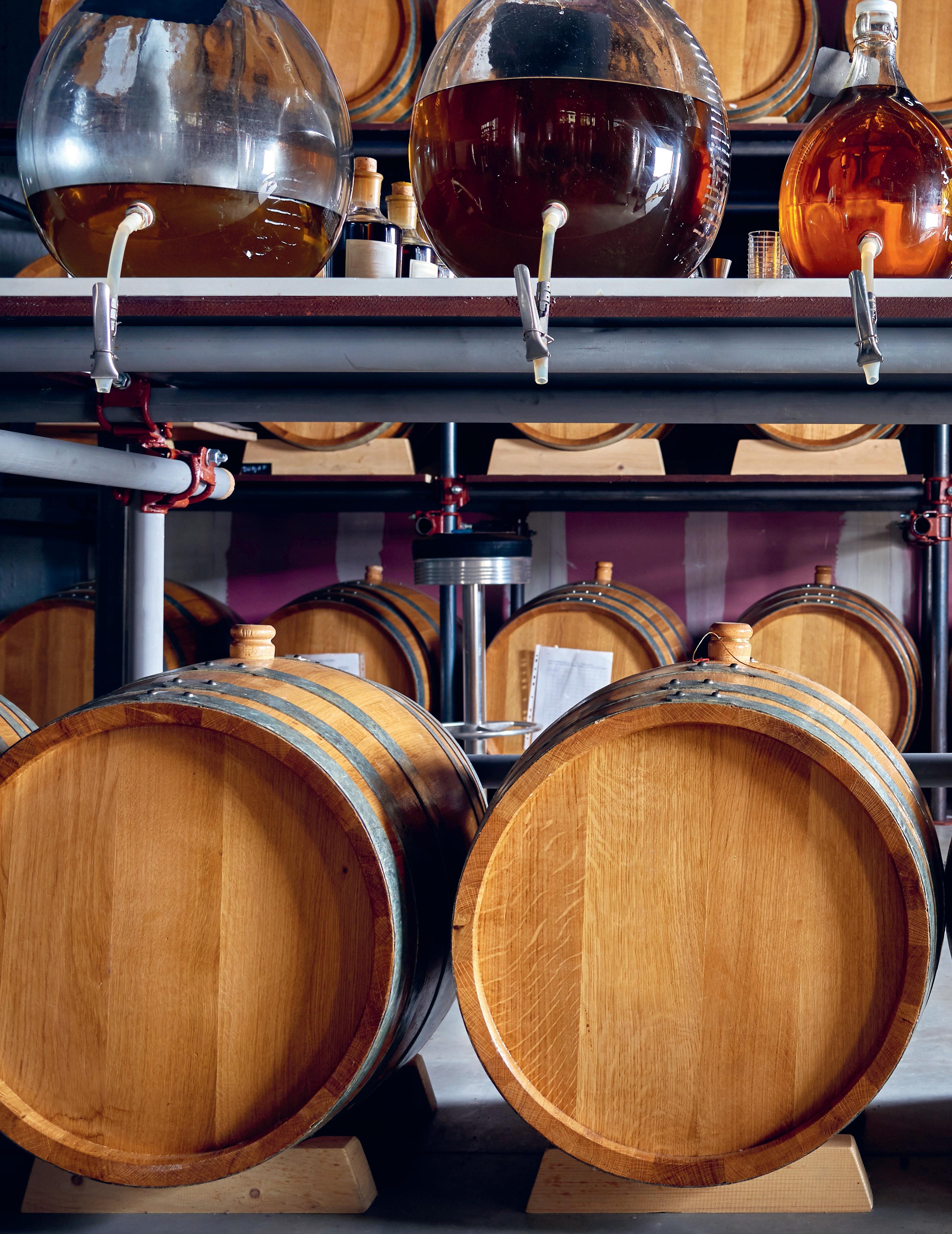
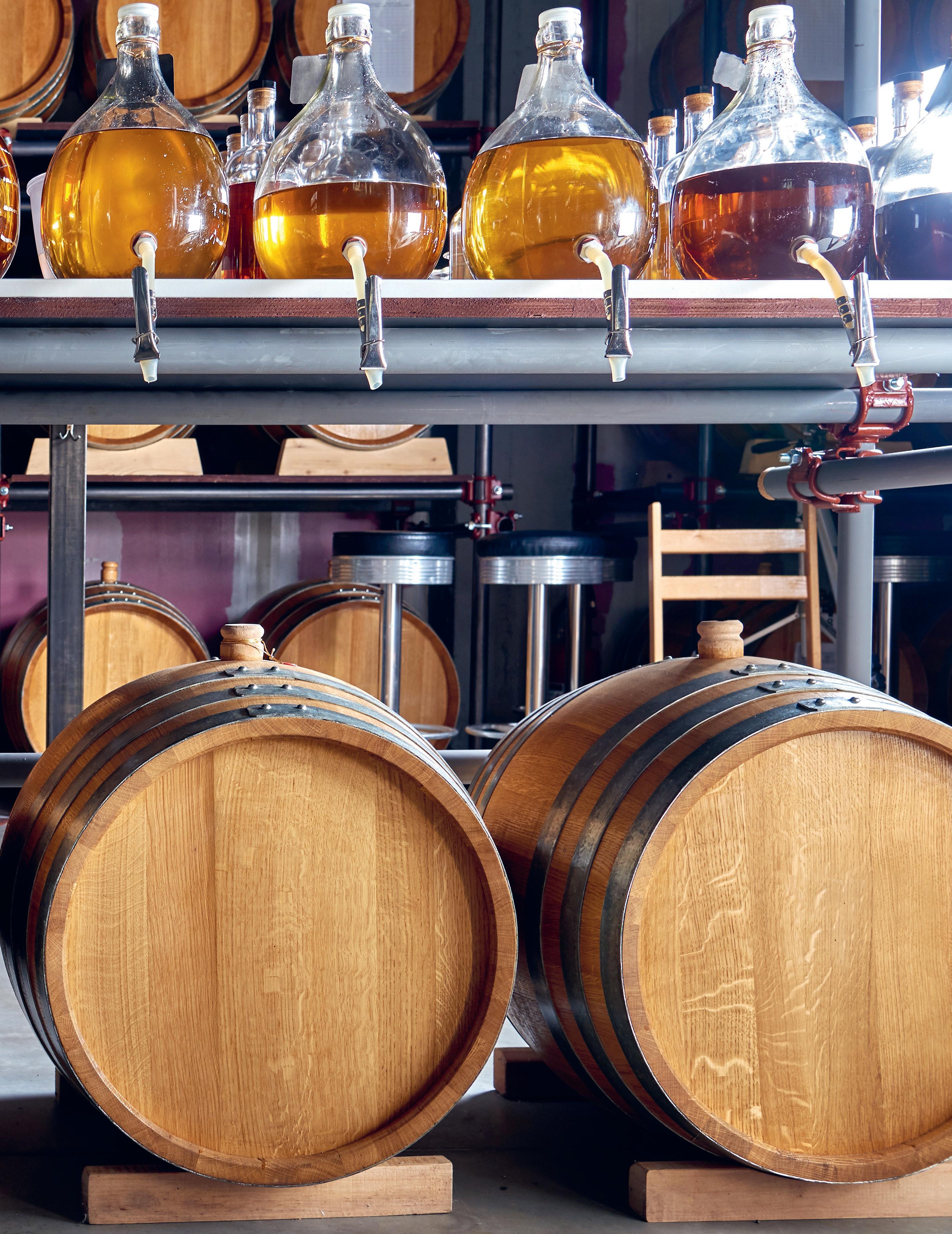
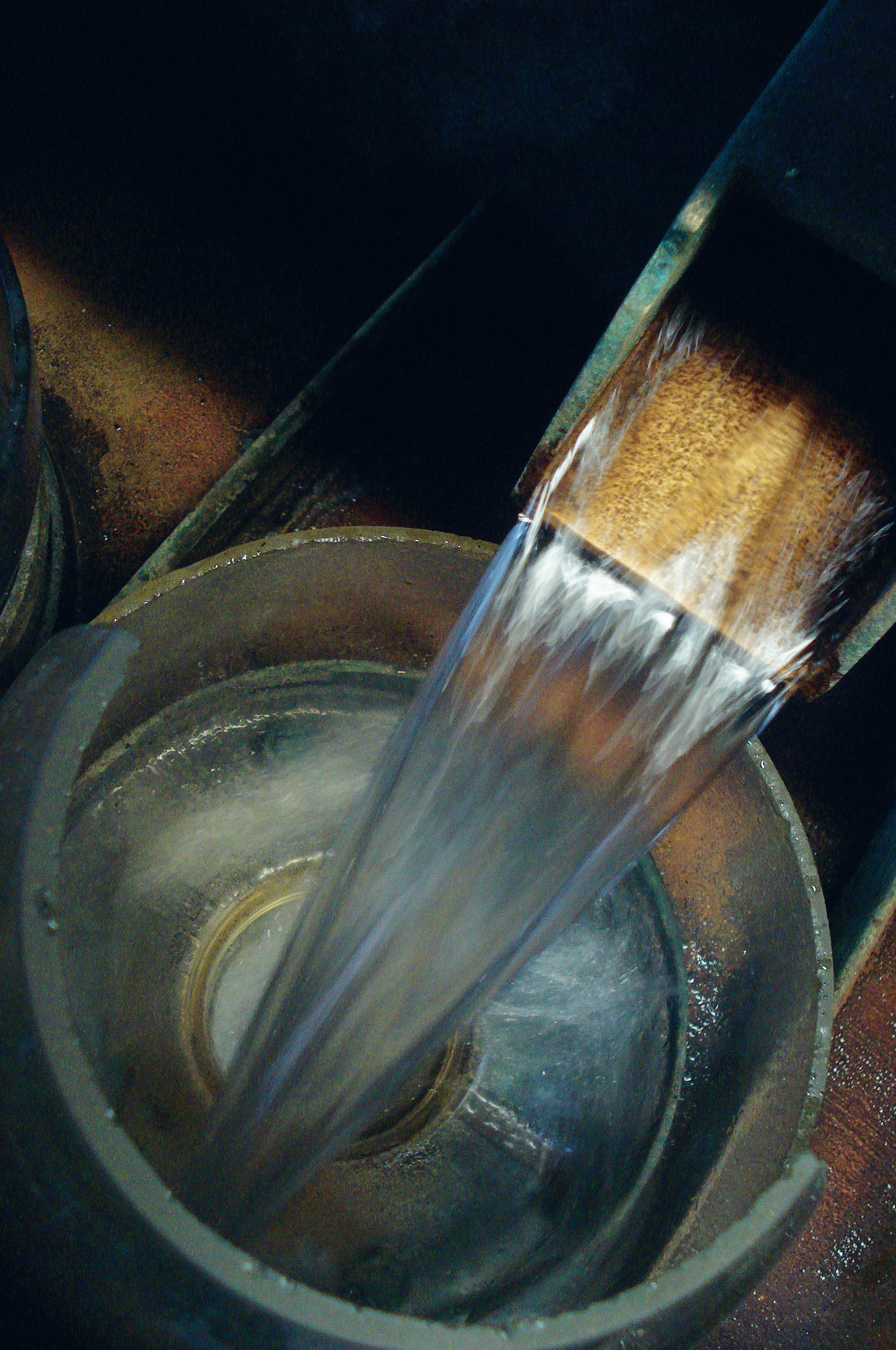
WHAT
If you look closely at the map of Great Britain, you will notice a small dot called the Isle of Man in the Irish Sea between England and Ireland. The island is not part of the United Kingdom, nor is it part of the European Union. It is part of the ‘British Crown Dependencies’, which could also be referred to as ‘a little island garden owned by the monarch’. Mann (as it is sometimes written) is best known for its tailless cats and its lack of speed limits (except in built-up areas). Hence the many bloodstained ‘motor races’.
But more interesting, the Isle of Man is the birthplace of Manx Whisky. This distillate was created in the sixties by the Kella Distillery. They bought Scotch malt whisky and expertly re-distilled the matured malt.The result was a colourless but obviously flavourful new spirit, which was immediately bottled. Manx Whisky was an instant success and was exported to England, too. That was against the rules of the Scotch Whisky Association (SWA). After a lengthy legal battle, Kella was forced to change the name to Manx Spirit.
Right on time, because a Manx Whisky Company has since been created, which will abide by the three-year rule and launch a Manx Whisky in 2024.
Because... once again, and now I’m getting angry, whisky must mature for at least three years in a wooden cask. And with that, all is said. It is clearly stated in EU Regulation 2008/110 and reiterated in its updated version, EU Regulation 2019/787. Major whisky countries outside Europe also adhere to this, except Australia (where it is only two years) and the United States, where it only applies to Straight Bourbon (two years) and Bottled in Bond (four years).
White Dog is a ‘new spirit’, a ‘whisky distillate’ that has not matured in a cask
WHERE
White Dog, sold in bottles, is mainly an American phenomenon but is also popping up in other countries
SYNONYMS
White Whisky, Baby Whisky, Moonshine, White Mule, Clearic Spike and a few more...
We owe this three-year requirement to David Lloyd George, the British Minister of Munitions and War during the First World War. From him, we have the 1915 exclamation: “We have to fight Germany, Austria and Alcohol, and as far as I can see, Alcohol is the greatest of these deadly enemies”.
And he immediately introduced a three-year maturation period for whisky (initially two, but then increased to three).
David Lloyd George was not only a chronic womaniser with a trained eye for pretty secretaries, he was also a teetotaller. But his dislike of whisky was not the main reason for his Immature Spirits Act of 1915! Excessive drinking among the working class (and the absenteeism that went with it) was causing munitions production to lag, and that had to change. And so it has remained to this day. However, we drink a lot less now –fortunately.
